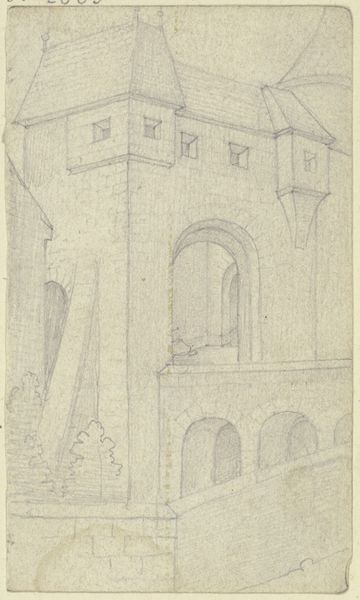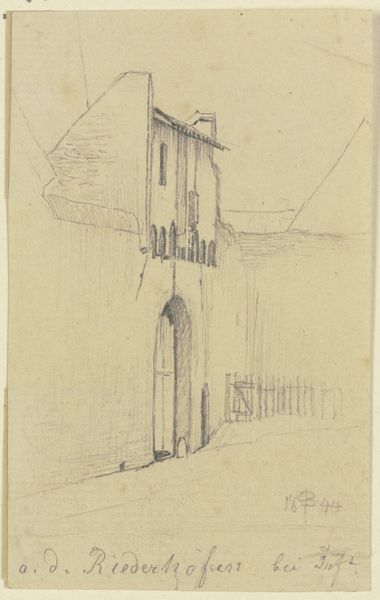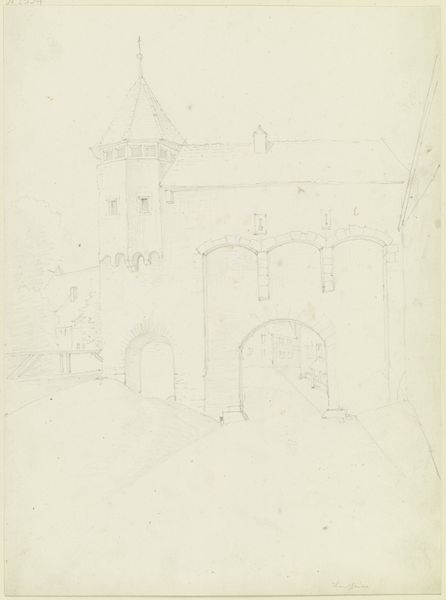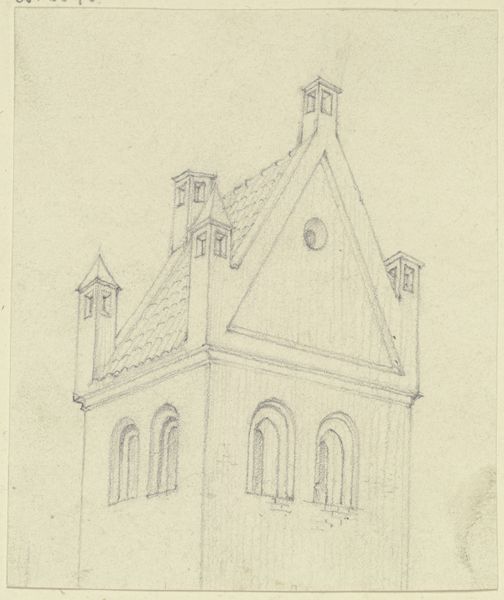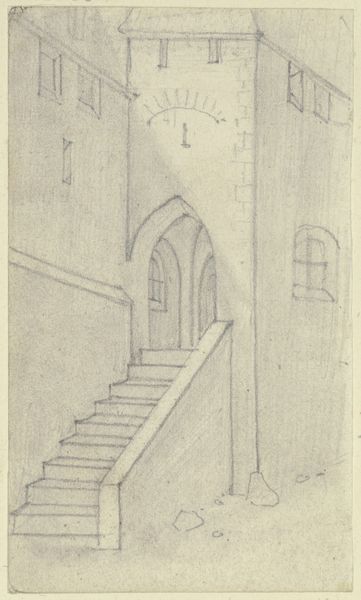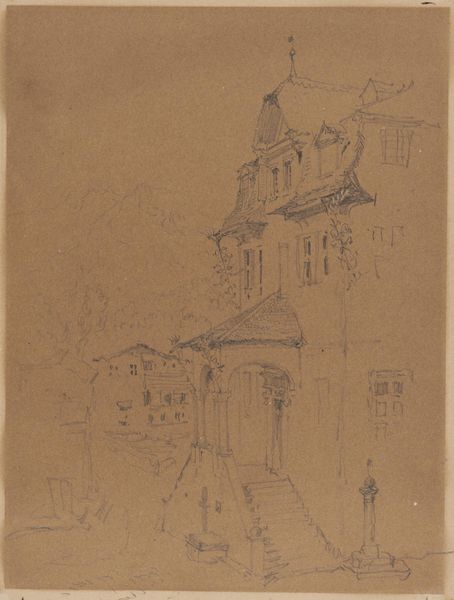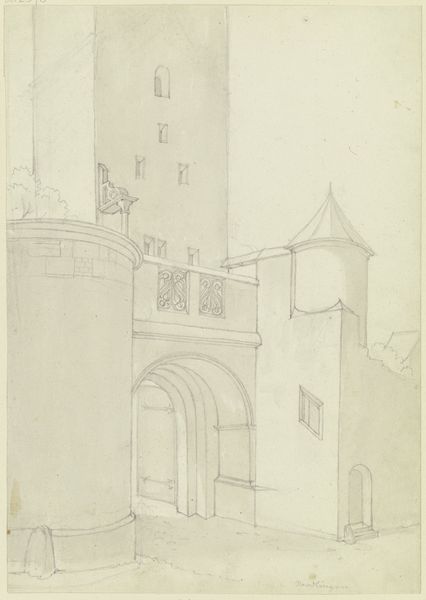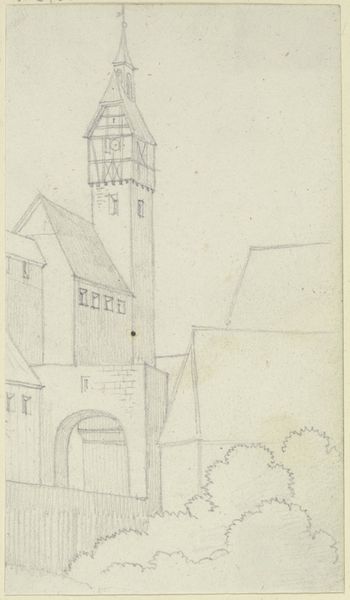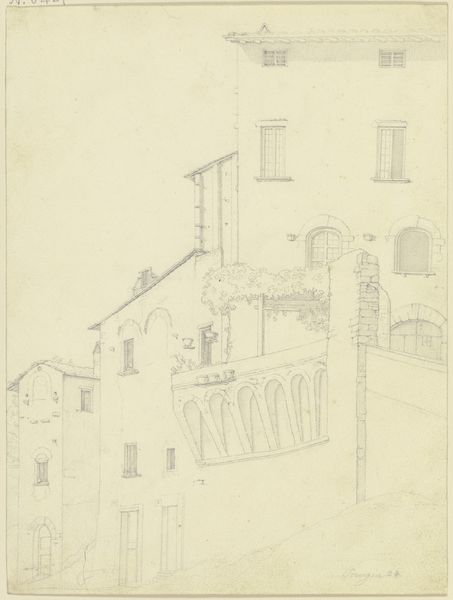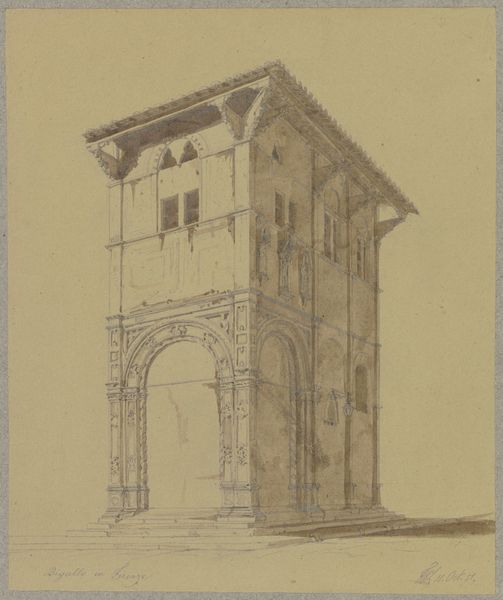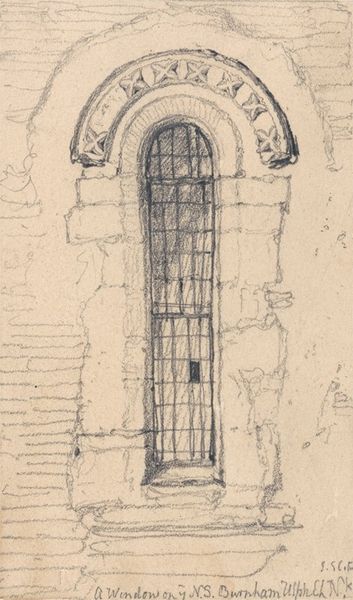
drawing, architecture
#
drawing
#
geometric
#
line
#
cityscape
#
architecture
Copyright: Public Domain
Editor: This drawing, titled "Barbican" by Karl Ballenberger, appears to be a simple line drawing. The use of just pencil and paper gives it an ephemeral quality. I am struck by the clear structural focus. What do you see in this piece, especially from a materialist perspective? Curator: This drawing speaks volumes about the labor and materials used, both in its creation and in the architectural structure it depicts. Consider the graphite itself – mined, processed, and shaped into a tool. Then there's the paper, made from plant fibers transformed by human industry. We're looking at a chain of production far removed from the final image, aren’t we? Editor: Yes, it is like an archeology of making! Does the drawing's style inform this approach as well? Curator: Absolutely. The "line" style reduces the Barbican to its basic structural components, emphasizing its materiality – the stones, the arches, the very foundations of urban development. The artist, Ballenberger, highlights the tangible means through which such fortifications were erected. How does the depiction of such architectural projects question high art and craft? Editor: It makes me think about who built the real structure. Who cut the stone, mixed the mortar, and raised these walls? Those labourers, and their place within the whole context of social consumption and hierarchy. Thanks so much! Curator: Exactly! By presenting this functional building as a work of art, Ballenberger directs our attention not just to the final product, but also the complex web of labor and resources it embodies. Now what new context do we both walk away with? Editor: This makes me see how every artistic process is embedded in a broader history of materials and labour. Curator: And how looking at these foundations reveals so much about what structures rise above them!
Comments
No comments
Be the first to comment and join the conversation on the ultimate creative platform.
